Active Members
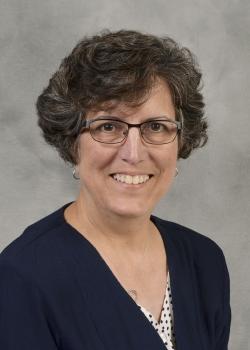 Ann Botash, MD
Ann Botash, MDLearning is an active process and a personal experience. My goal is to inspire and engage learners to find their path to a mutually desirable outcome. A good teacher creates memorable key components to clarify concepts and promote a progression toward comprehension and mastery. The experienced educator uses storytelling to elicit an affective response that motivates students to not just invest in the learning process, but to own it.
 Amy Brown, MD, MSc, MSCS
Amy Brown, MD, MSc, MSCS As a medical educator who is also a pediatric oncologist and bioethicist, I firmly believe that my purpose is to help develop life-long learners who are capable of fulfilling their ethical and professional obligations to provide just, compassionate, evidence-based healthcare to patients and families from diverse backgrounds. My educational philosophy emphasizes the idea of humility and respect for the limits of medical knowledge, and I evaluate my success as an educator by my ability to help students and trainees learn to recognize and acknowledge their own biases (including recognizing themselves and the healthcare system as products of culture) and to navigate the uncertainty, ambiguity and change inherent in contemporary medicine with humility and curiosity. I think that is important to allow learners to confront the real challenges and complexities of healthcare practice in safer or “brave” spaces, before they are faced with real patients and situations, and to encourage them from the beginning of professional training to develop the habits associated with excellent healthcare practitioners.
 Amy DeBlois, PT, DPT
Amy DeBlois, PT, DPTMy teaching philosophy fosters a safe, collaborative learning community for students of various learning styles with the goal of developing critical thinkers and lifelong learners. Setting clear learning expectations and objectives and acknowledging the value of formative feedback is essential. I share my passion with students through clinical cases and labs to actively apply didactic material and engage students in teaching and learning from each other, which is one of the most powerful teaching tools.
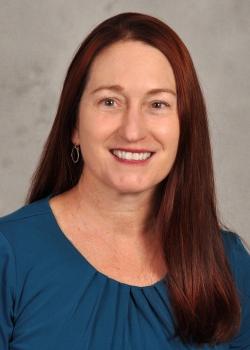 Michelle R. Dolphin, PT, DPT, MS, OCS, FAAOMPT
Michelle R. Dolphin, PT, DPT, MS, OCS, FAAOMPTMy philosophy of teaching and learning reflects my belief that education is optimized when it is student centered, dynamic, and highly interactive. It is similar to my philosophy of patient care that puts the patient (student) first, is participatory in nature (active learning), focuses on meaningful shared goals (learning objectives), and works to promote self efficacy (student affinity and ability for lifelong learning). I embrace formative feedback to identify "gaps" in didactic content knowledge, psychomotor skills, and communication skills, essential for success in health care.
 Lauren Germain, MEd, PhD
Lauren Germain, MEd, PhD“Knowledge” is being created more quickly than any person can fully learn, teach or use it. In this context, critical thinking, systems understanding, and teamwork are essential to education in all forms. As an educator, two of the most powerful tools we have are good questions and specific feedback to learners. As an assessment professional working in our health professions university, I believe that learner assessment and feedback are our responsibility not only to learners, but to society.
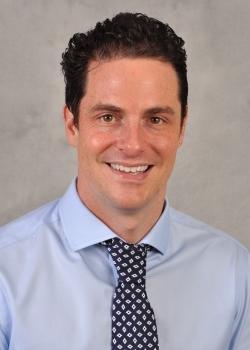 Aaron Glass PhD, MB(ASCP)
Aaron Glass PhD, MB(ASCP)As a basic scientist who ended up teaching by necessity (and enjoying it), this is my first attempt atidentifying what I do, andwhyI do it. I admit what is written here is not really a coherent philosophy,but some guidelines arrived at through trials and (many painful) errors. Most of these guidelinesrefer to lecturing, since this is the teaching format most familiar to me.
When teaching, I try to: Tell a story. This means putting a narrative to the string of facts contained in a lecture. Not only dostudents seem to appreciate a story, but I believe it helps ensconce material in long term memory. Know my lines. My approach is 90% memorization and 10% improvisation. A presentation seems to flow when I know the material intimately, but leave some parts open to happen in the moment. Know my audience. What is their pre-lecture knowledge level? How busy are they? What other material is on the exam? Sometimes this requires attending the lectures given by colleagues and/or reading their handouts. Entertain. Speak with energy and incorporate humor (but not too much). Try to survey the audience for expressions and questions every minute-or-so. Let the material and delivery evolve over time. Adopt the best practices from colleagues andunderstand that what worked well one year may fall flat the next. I’m always ready to change tack and try something different.
 Rebecca Greenblatt, PhD
Rebecca Greenblatt, PhDStudents at Upstate are well-prepared, self-motivated, adult learners. As educators here, I feel that our first responsibility is to provide them with high-quality, well-organized materials - lectures, labs, small-group challenges, and more - to serve as springboards for their learning. Next, we cultivate a highly collaborative, interactive learning environment that encourages each learner to leverage the remarkable human resources available on campus. High on that list of remarkable resources are their fellow students. Many of our first-years have not previously had the experience of being surrounded by genuine intellectual peers and collaborators. We push them hard to build bridges to their peers that develop into long-term professional networks and enable them to become comfortable with the highly team-based modern medical workplace. It is an honor to be part of this process of personal and professional growth.
 Kathryn Holliday, DNP, CPNP, CNE
Kathryn Holliday, DNP, CPNP, CNEI grew to love education through experience and opportunities that were presented to me after becoming a Nurse Practitioner. I quickly realized that the impact I could have on the healthcare system would be multiplied by being involved in nursing education. My personal philosophy of education is rooted in the tenets of experiential learning, effective role modeling, and empathetic mentorship. I believe that in nursing education students need to be immersed in healthcare experiences (clinical experiences, case studies, OSCEs, simulations). Memorization of facts is not enough to effectively work in the dynamic healthcare environment. Learners need hands-on experiential education to develop competency. I strive to model excellence in nursing and education to my peers and learners. Leaders in healthcare education “set the tone” and learners look to educators as a guide. Modeling effective communication with learners is imperative. I also believe that empathy is incredibly important in nursing education. A learner’s life experience often shapes his/her education. I want to know and understand the strengths and weakness of learners to advocate and tailor education to individual learning needs. I want learners to know that they can come to me for assistance throughout his/her education and that I will be there to provide support and guidance. There is an old saying that “nurses eat their young” and I am happy to be able to state that my educational philosophy is the opposite.
 Margaret Maimone, PhD
Margaret Maimone, PhDThe foundation of my teaching philosophy is to create a learning environment where all students, no matter their learning style, can maximize their learning potential and feel safe and comfortable doing so. This means addressing the class in a professional manner, being clear about my expectations, welcoming questions from students, being accessible outside of class to provide additional help to students who request it, and guiding students in how to be active learners.
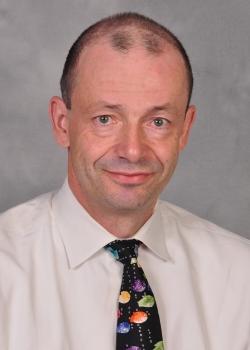
Andreas H. Meier, MD, MEd, DR Med, FACS, FAAP
My educational scholarship has been mostly directed towards medical student and resident education. I am especially interested in applying new technologies (internet, simulation) to the educational process for these learner groups. More specifically, I have created combined web- and simulation-based curricula for incoming PGY I residents and developed a simulation curriculum based on TeamSTEPPS for graduating medical students with interest in surgery.
My reason to participate within the Academy is to share my expertise and experiences with other Academy members, but also to use my background to the benefit of the teaching faculty at Upstate at large. Having performed educational research studies and received some grant funding for these endeavors I would like to continue my scholarly activities in this area and feel that the Academy is a great venue to do so.
In order to learn material to a point of true understanding, students must develop conclusions on their own in an active learning process, being guided in right direction by their professors. Given that medical, graduate, and health profession students are adult learners, their education should be guided by principles of andragogy, namely: understanding "why" they are learning about a specific topic. When teaching students basic anatomy, I explain concepts by injecting clinical correlates related to the specific subject being discussed. This helps students draw connections to previous experiences in the hospital and also shows them how they will need to use this information to bed help their future patients. Furthermore, by delivering team-based teaching sessions, students are better able to help each other identify the why, helping them better understand and retain the core concepts. Learning by doing. In the anatomy laboratory, students are learning through hands-on dissection, helping them grasp the three-dimensional relationship between different anatomical structures. Furthermore, this helps them better appreciate anatomical variations. Solving real-life problems. Discussions of the anatomy topics take place in a small group setting and are based on actual clinical cases that are pertinent with the content of specific sessions. Students will engage in reflective dialogue and they are encouraged to consider various perspectives. During these sessions, I provide feedback that challenges learner's assumptions and deepens their critical thinking and clinical reasoning approach.
In addition to these principles, mastery requires learning to occur in multiple layers. Students should first engage with the material on their own, gaining confidence through independent research and building a foundation. Then, in the classroom, active discussion between students and with professors can be sed to help guide each individual to fill in the gaps from their independent learning. Finally, working together to solve problems hones students' reasoning abilities and cements the basic information on which the problems are built. In my experience, students' feedback along the years was very important in designing and polishing the in-person sessions. In my opinion, we cannot accomplish a good result if we as educators don't create a learning climate that is trusting, empathetic, and caring. A positive learning environment is the basis of my teaching philosophy. I give students immediate and helpful feedback promoting their autonomy, participation, and collaboration.

Jennifer Moffat, PhD
Professional and graduate students require a focused curriculum to meet the demands of their degree programs, and yet every student has a unique mixture of knowledge that affects their ability to learn complex material. Thus I use an approach in the classroom that builds trust between me and the students, enabling me to recognize points where they need more background or examples of concepts. My goals are to incorporate active learning exercises into didactic lectures, encourage students to voice their uncertainties, identify the students' individual needs, and give them the skills for success in their fields.
 Thomas L. Schwartz, MD
Thomas L. Schwartz, MD
My philosophy about teaching is the same as my approach to any skill, hobby, sport, or job. (1) Pick one that you intrinsically like. (2) Always look for ways to improve your knowledge and skills. (3) Accept change as a positive thing and always try different ways to approach both problem areas and places which you are already an expert. The key is to always move forward with knowledge, skills and application. My hope is that students can appreciate this through my teaching and role modeling. Teaching and learning are both progressive processes where teacher and students should strive to always continue their education and improve themselves in every way possible!
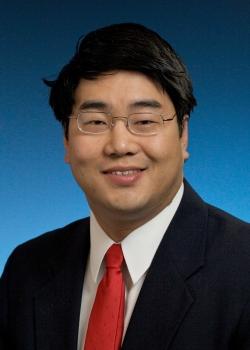 Mike Sun, MD
Mike Sun, MD
The essence of education begins and ends with good communication. Webster dictionary defines communication as the act of conveying information. History’s most effective educators were great communicators. Even more relevant in today’s digital age, the ability to share information is the foundation of education. Having grown up in a family with deaf/mute parents using sign language, I learned the importance of good communication early on in life. One must understand that good communication is not achieved simply with information disseminated but rather information understood and applied by the recipient. In the field of medicine, communication is paramount between teachers and students as well as physicians and their patients. By practicing good communication skills with students early on in their medical education, we encourage them to become better communicators with their students and their patients.
 Jennifer Vaughn, DNP, RN, NE-BC
Jennifer Vaughn, DNP, RN, NE-BC
My area of emphasis in education is leadership and education administration, advising and mentoring and professional development. The challenges of the pandemic highlighted how important it is to demonstrate to all healthcare employees that we care about their overall wellbeing, as it will have a direct impact on patient care with positive, evidence-based outcomes. As nurse leaders and nurse educators we must prioritize and blaze new trails to enable compassionate patient care among all sectors of the health professional workforce, regardless of the global climate.
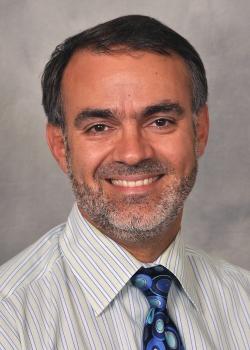 Michael Vertino, MD
Michael Vertino, MD
I have been so fortunate to be able to share the joy of learning. Science and Medicine are so intrinsically interesting and help me understand what I observe and experience. “Isn’t that Cool!” As I understand more clearly how ideas and experiences come together, I want to share it with my learner’s.
Over the years, I’ve studied the ways in which I learn as well as how my students learn. The similarities and differences are fascinating. Educationally, I strive to connect new information and experiences with previous ones. Where possible, I try to connect to the person’s own experience. Improvements in group and individualized instruction for me grows from studying my learners. I also like to study skill development similarly to understand acquisition and guide practice. What could be better than the privileged position I hold as a medical educator.
 Pamela Youngs-Maher, EdD
Pamela Youngs-Maher, EdD
My philosophy of education stems from servant leadership. As Director of Online & Distance Learning, my primary role is to serve faculty by pairing their subject matter expertise with instructional design principles, best practices in online learning, active learning techniques, and a variety of educational technology tools to create learning environments that engage our students. I also serve students. Sharing teaching presence with our students helps them better prepare for their roles in their respective health professions. And, advocating for online and distance learners helps us think about how to best serve all of our students when they are not on campus.
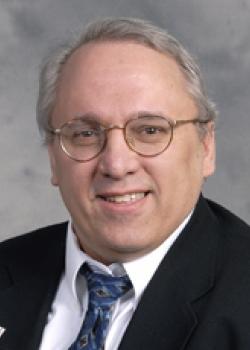 Robert Zajdel, PhD
Robert Zajdel, PhD
I believe being a good teacher involves developing a trust with the learners. Learners trust that you know your content, have effective delivery methods and evaluate content that was taught and is relevant. A teacher must trust that the students will be attentive and use the tools for learning that an educator gives them. The teacher also trusts that they are there to learn. The development of trust is the first step in effective communication of ideas and content. Trust is also necessary in a team of teachers. They have to trust in the dedication and work of their colleagues. A good team and a good team leader can elevate and support all of the members of the team. Education of learners, whether students or colleagues requires trust, communication, and hard work for individual, team, and institutional success. A student can be inspired by a teacher who is dedicated and cares about their success. This can inspire the students to be dedicated and care about their future patients.

